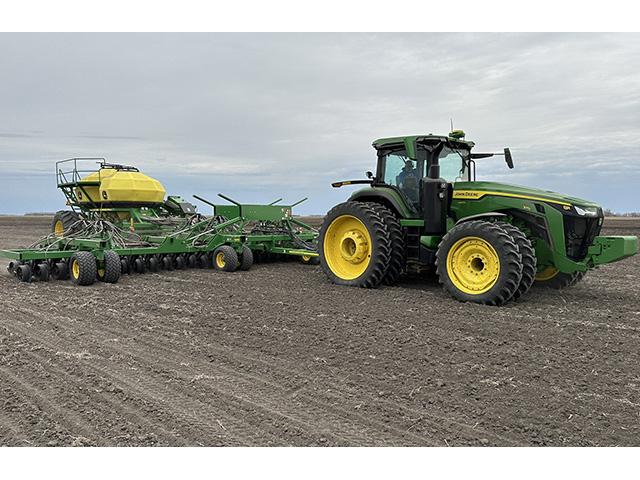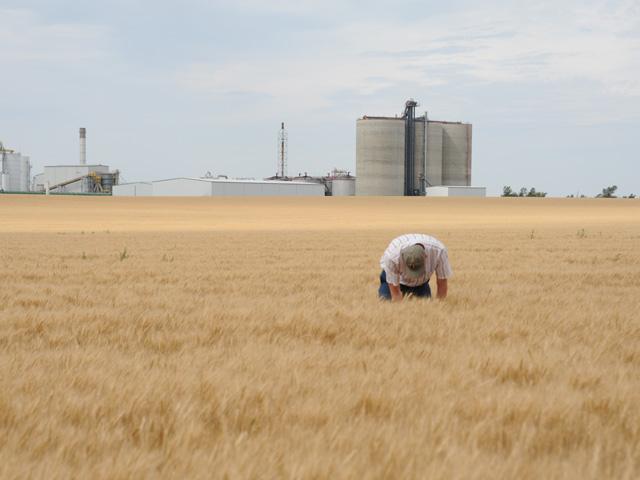Spring Wheat and Durum Tour Preview
Scouts Assess Spring Wheat and Durum Yields, Quality Next Week
ANKENY, Iowa (DTN) -- Participants on next week's Wheat Quality Council Hard Spring Wheat and Durum Tour are expected to find potentially high-yielding fields despite a challenging start to the growing season.
North Dakota hard spring wheat and durum fields will be primarily evaluated, along with a few in northwest Minnesota and northeast South Dakota, during the four-day event. About 50 field scouts will be trained on how to calculate yield estimates using formulas supplied by USDA's National Agricultural Statistics Service and receive an update on crop conditions on July 25 in Fargo, North Dakota. Field sampling starts near Fargo on July 26 and ends July 28 when final yield and production estimates will be released.
USDA released its initial spring wheat and durum yield and production estimates on July 12. The government projects spring wheat and durum yields at 47 and 40.3 bushels per acre (bpa), respectively. Production is estimated at nearly 503 million bushels for spring wheat and 77.2 million bushels for durum wheat.
Wet conditions caused much of the spring wheat and durum crops to be planted in late May and in June, weeks later than normal in many cases. Almost near-ideal weather -- mostly mild temperatures and good moisture -- has followed, according to wheat and commodity specialists.
DTN Lead Analyst Todd Hultman believes this year's spring wheat crop has the potential to top the previous national record yield of 48.6 bpa, set in 2020.
"The wheat looks fantastic, from what I'm hearing," Hultman said, referring to North Dakota, the nation's largest spring wheat and durum producer. "The entire (spring wheat) area looks really good, especially North Dakota."
USDA estimates North Dakota spring wheat and durum will average 51 bpa and 40 bpa, respectively. Last year, the state's spring wheat and durum averaged 33.5 and 24 bpa, respectively, according to USDA data.
North Dakota farmers planted 1.05 million acres of durum wheat and 5.4 million acres of spring wheat this year, according to the June USDA Acreage report. An updated acreage report will be released Aug. 12. In 2021, the state's farmers seeded 5.5 million acres of spring wheat and 880,000 acres of durum.
Greg Endres, North Dakota State University cropping systems specialist, agrees that record spring wheat yields could bless farmers if weather conditions remain favorable. Much of the crop is headed and in the flowing and blister stage, he said, though some late-planted wheat is still in the boot stage.
To date, Endres said, disease and pest pressure is low. However, he recommends farmers spray wheat with a fungicide to combat Fusarium Head Blight, otherwise known as scab, to protect plants as kernels develop and grain fill occurs. The fungal disease is typically a problem, he said.
P[L1] D[0x0] M[300x250] OOP[F] ADUNIT[] T[]
"Early in the season, it was amazing the number of tillers that were present (in fields)," Endres recalled. "We've lost some tillers, but the prospective of a very good crop is certainly present."
TOUR VALUE
About 50 representatives of flour mills, bakers, food manufacturers, university researchers and agronomists, wheat buyers and more will attend the tour, according to Dave Green, Wheat Quality Council executive vice president. The event brings wheat buyers and sellers together to network, learn about how the crop is produced and how much will be available for future food and feed needs.
Green said the tour will provide the latest snapshot of the size and quality of the spring crop.
"I think we will see good crops, which is good after last year's crop failure," Green said. Spring wheat yields averaged 33.3 bpa in North Dakota in 2021 due to drought, which is 18 bpa less than USDA's estimate for the state this year. "We've got pretty good credibility on the tour giving descriptions of the crop, and we plan to do that again. We try to do a good job giving a reset of what the crop may be worth."
Wheat prices have dropped about $5 per bushel since May when spot Minneapolis wheat topped out at $14.13 per bushel, according to Hultman. Prospects of a good spring wheat crop, new-crop hard winter wheat entering the market and speculator selling has contributed to the decline.
Hultman said Minneapolis wheat traded at $9.26 per bushel on July 21, which is still historically high compared to prices the last 10 years. Given tight world supplies and the ongoing war in Ukraine, a major wheat producer, he thinks prices will rebound in the coming months.
"I really think because of the drastic sell-off that we've had in speculators panicking out of the wheat market the past two months, there will be a payoff for farmers who hold wheat into the winter ... if they can financially do that," Hultman said. "I think the market is going to start paying more attention to the fundamentals as we move forward."
USDA STATS
The following are the latest USDA spring wheat estimates for Minnesota and South Dakota:
-- Minnesota farmers planted 1.25 million acres, up 40,000 acres from 2021. The average yield is estimated at 53 bpa, up 5 bpa from last year. Production is pegged at 61.5 million bushels, up about 6 million bushels from 2021.
-- South Dakota farmers planted 770,000 acres, up 50,000 acres from 2021. The average yield is estimated at 49 bpa, up 20 bpa from last year. Production estimated at 35.8 million bushels, up nearly 19 million bushels from last year.
TOUR INFO
Hundreds of fields will be assessed by tour scouts using the same procedures for consistency. The same tour routes are followed every year. Each vehicle makes 12 to 15 random stops each day, and yield estimates are tallied.
On July 26, participants leave Fargo and travel through the southern one-third of North Dakota, with one route hitting several bordering counties in South Dakota. The day ends in Mandan, North Dakota.
On July 27, tourgoers travel through the central and north-central part of North Dakota, ending the day at Devils Lake.
The tour ends on July 28 at North Dakota State University in Fargo, after scouting fields in the northeast and east-central part of the state. One route will travel through several counties in Minnesota along the border. Final yield and production estimates will be revealed.
Media outlets including DTN will participate. Look for DTN stories and videos, including yield estimates and observations, on www.dtnpf.com and on Twitter.
Matthew Wilde can be reached at matt.wilde@dtn.com
Follow him on Twitter @progressivwilde
(c) Copyright 2022 DTN, LLC. All rights reserved.






